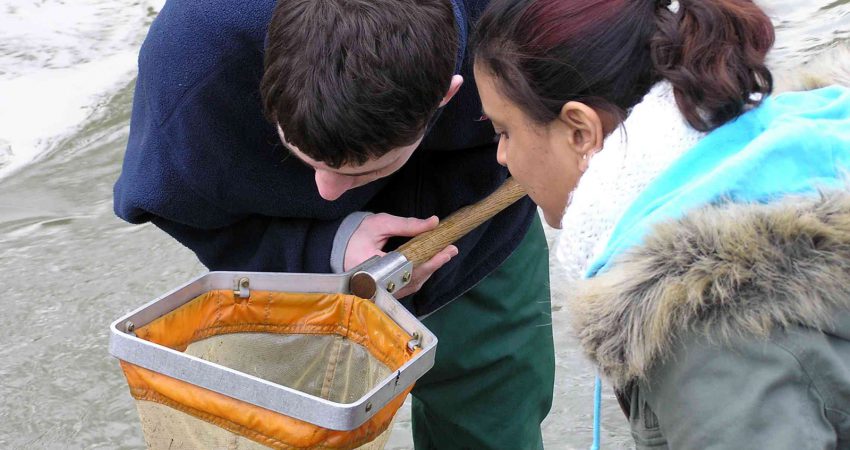
By Melissa Ballard - April 2013
PAPER CITATION
Lyon, G., Jafri, J., & St. Louis, K. (2012). Beyond the pipeline: STEM pathways for youth development. Afterschool Matters, 16 , 48–57.
In this article, Lyon, Jafri, and St. Louis discuss the limitations of the concept of the “STEM pipeline,” an analogy commonly used in education and policy discussions to describe the academic progression of students from elementary school through higher education in STEM, ideally resulting in employment in a science, technology, engineering, or math (STEM) field. Based on a decade of experience with the urban out-of-school time (OST) program Project Exploration, the authors propose a conceptual framework that supports youth development goals in addition to STEM learning. The Youth-Science Pathway model was developed to reflect the experience of urban youth in OST STEM learning environments. It has direct applications to the design and outcomes of STEM OST programs serving underserved and underrepresented populations.
The authors find two main limitations in the STEM pipeline analogy. First, it sees employment in a STEM career as the measure of success of STEM education over many years. The authors argue that STEM learning and youth development reinforce and complement each other, so that youth development goals are necessary for STEM OST experiences. Secondly, successful progression through the pipeline requires students to be continuously engaged with STEM learning throughout their academic careers, both during and after school. If students miss a step early on or develop an interest in later years, re-engagement or late engagement is often blocked by structural barriers such as “registration fees, lack of prerequisite knowledge, . . . inability to demonstrate pre-existing interest in science, . . . and a dearth of accessible opportunities” (p. 49). Assessing the value of a program or series of programs by the extent to which students progress along the STEM pipeline is inappropriate. A better way of assessing engagement in STEM is considering STEM learning in conjunction with youth development.
To support their critique, the authors use findings from an evaluation of Project Exploration (Chi et al. 2010), student interviews and surveys, staff experiences, and program data. A particular pattern of engagement with Project Exploration saw students join, leave, and re-join the program at different points in their lives. The authors believe that strong relationships with program staff enable students to re-engage in Project Exploration programs throughout their middle and high school years. The evaluation found that students indicated meaningful and long-term relationships with program staff as important factors in their participation, which staff concurred with. By contrast, career or workforce development goals were not important factors in students’ decisions to stay involved with Project Exploration. Evaluation results showed that 60 percent of alumni pursued formal STEM education beyond high school. However, Project Exploration alumni also reported remaining involved with STEM in other ways, such as “public policy, journalism, home health care, parenting, traveling, or volunteering at a community-based organization” (p. 51).
Incorporating these results and observations, the authors developed the Youth-Science Pathway model as an alternative way of understanding youth participation in STEM. The model offers a collection of STEM programs along three learning strands—Discover, Explore, and Pursue—each of which has explicit and differentiated goals and outcomes. The programs are complementary, focusing on various aspects of 14 core competencies in STEM and youth development, so that they support social and emotional development as they build STEM skills. Providing different types of programs along the Youth-Science Pathway means that participation is not dictated by sequential participation or a single path. Acknowledging that student participation is not necessarily driven by career goals, programs designed to be explicitly relationship based can have substantive impacts on students’ personal and educational achievements. Including these impacts while recognizing that adult participation in STEM is not limited to a career in a STEM field broadens the definition of success for STEM OST programs.
This article re-conceptualizes the STEM pipeline analogy for an audience of STEM OST providers, offering a new and more appropriate way of understanding STEM OST engagement. The Youth-Science Pathway model can inform larger education discussions, policy debates, and media reporting on STEM education for underserved and underrepresented populations.
Reference:
Chi, B., Snow, J. Z., Goldstein, D., Lee, S., & Chung, J. (2010, December).Project Exploration: 10-year retrospective program evaluation summative report. Berkeley, CA: Center for Research, Evaluation and Assessment. Retrieved from http://www.projectexploration.org/pdf/lhs-final-report-10-year-eval.pdf?....




